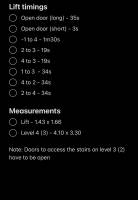ScreenStage performance: Hybridity, perception and enstrangement
PhD thesis
Reshef-Armony, S. 2022. ScreenStage performance: Hybridity, perception and enstrangement. PhD thesis Middlesex University
| Type | PhD thesis |
|---|---|
| Title | ScreenStage performance: Hybridity, perception and enstrangement |
| Authors | Reshef-Armony, S. |
| Abstract | This Practice as Research (PaR) proposes to articulate creative strategies within a hybrid intermedial form, known as ScreenStage Performance (SSP), integrating stage performance with screening. The strategies aim to disrupt customary perceptual patterns by means of intermedial approaches to composition as narration, invoking an awareness of these perceptions. The research integrates philosophical thinking with the creation and analysis of two ScreenStage performances – The LIFT (2021) and SEASONS (2019, 2022) – and the findings from extensive practice laboratories. The thesis posits the practice of ScreenStage as a subgenre in the intermedial field prevalent in the performing arts. ScreenStage practice attempts to represent the mediation and extension of human action through digital media and the virtual realms by means of conceptual hybridity. The thesis articulates the insights of a practitioner by applying new ways of semiotic thinking about intermediality in terms of composition, action, narration and ‘enstrangement’ (Shklovsky, 1919). SSP is considered and analysed as a system for signification and communication. |
| Keywords | ScreenStage Performance; Hybridity; Perception; Enstrangement; Alienation; Contemporary semiotics; Intermediality; Transmediality; Liveness; Conceptual Dance |
| Middlesex University Theme | Creativity, Culture & Enterprise |
| Department name | Arts and Creative Industries |
| Institution name | Middlesex University |
| Publication dates | |
| 02 Feb 2023 | |
| Publication process dates | |
| Deposited | 06 Feb 2023 |
| Accepted | 14 Dec 2022 |
| Output status | Published |
| Accepted author manuscript | |
| Supplemental file | |
| Supplemental file | |
| Supplemental file | |
| Supplemental file | |
| Language | English |
https://repository.mdx.ac.uk/item/8q3z9
Download files
Accepted author manuscript
Supplemental file
140
total views223
total downloads3
views this month2
downloads this month

